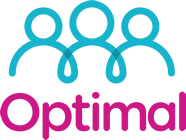Around this time of year when office Christmas parties are in full swing, HR often receive calls from employers reporting unacceptable behaviour from colleagues at the Christmas party, potentially leading to disciplinary(s) and/or grievances being raised. As HR Professionals we have probably heard and seen it all from drunken fights to non-consensual or even consensual flirtatious activities between colleagues to rude and inappropriate comments to other colleagues or individuals working at the party venue.
Here are our hints and tips to ensure that everyone enjoys the office Christmas party without the New Year hangover of disciplinaries or grievances…
1. Set Expectations
Prior to the Christmas party or any other work related social event for that matter, employers should set out their expectations of colleagues. Employers should be clear that whilst the Christmas party may be out of “normal” working hours and/or off-site, they are still representing the company and as such they should see it as an extension of work. Therefore, the behaviours expected in the workplace, albeit a little more relaxed, are still expected at the office Christmas party. If it isn’t appropriate in the office environment it isn’t appropriate at the Christmas party, and colleagues should be aware that there will be potential consequences for their actions.
2. Be a Responsible Employer
Most businesses see the Christmas party as a way to reward their colleagues for their efforts over the last year and for everyone to have fun, and it usually means providing alcohol either all night or for part of the night. However, businesses should be mindful of the provision of alcohol at such events and how this can lower people’s inhibitions and have an effect on their judgement. Whilst colleagues should be responsible for the amount of alcohol they consume, it is recommended that businesses limit the amount of free alcohol they provide at the Christmas party to mitigate any inappropriate misconduct or behaviours, and particularly if colleagues are expected to work the next day and/or drive for business purposes.
Remember, employers are liable for colleague’s actions.
3. Be Consistent
If you do need to deal with any misconduct that occurs it is important that employers are consistent in the action that they take. The outcomes may be different, depending upon the circumstances; however, the procedures followed should be the same. This is particularly important for employer’s who have multiple sites and multiple Christmas parties.
The foundations of these hints and tips lie in transparent and robust HR policies that give guidance to both the employer and employees. Sound HR policies not only set out the expectations the business places on its employees, but what the employee can expect from the business.
If you would like us to carry out a review of your current HR policies and procedures or if you need help or advice with regards to any employee relations matters arising from your Christmas party or otherwise, please speak to a member of the Optimal People & Business Services HR Team on 01422 897152.










